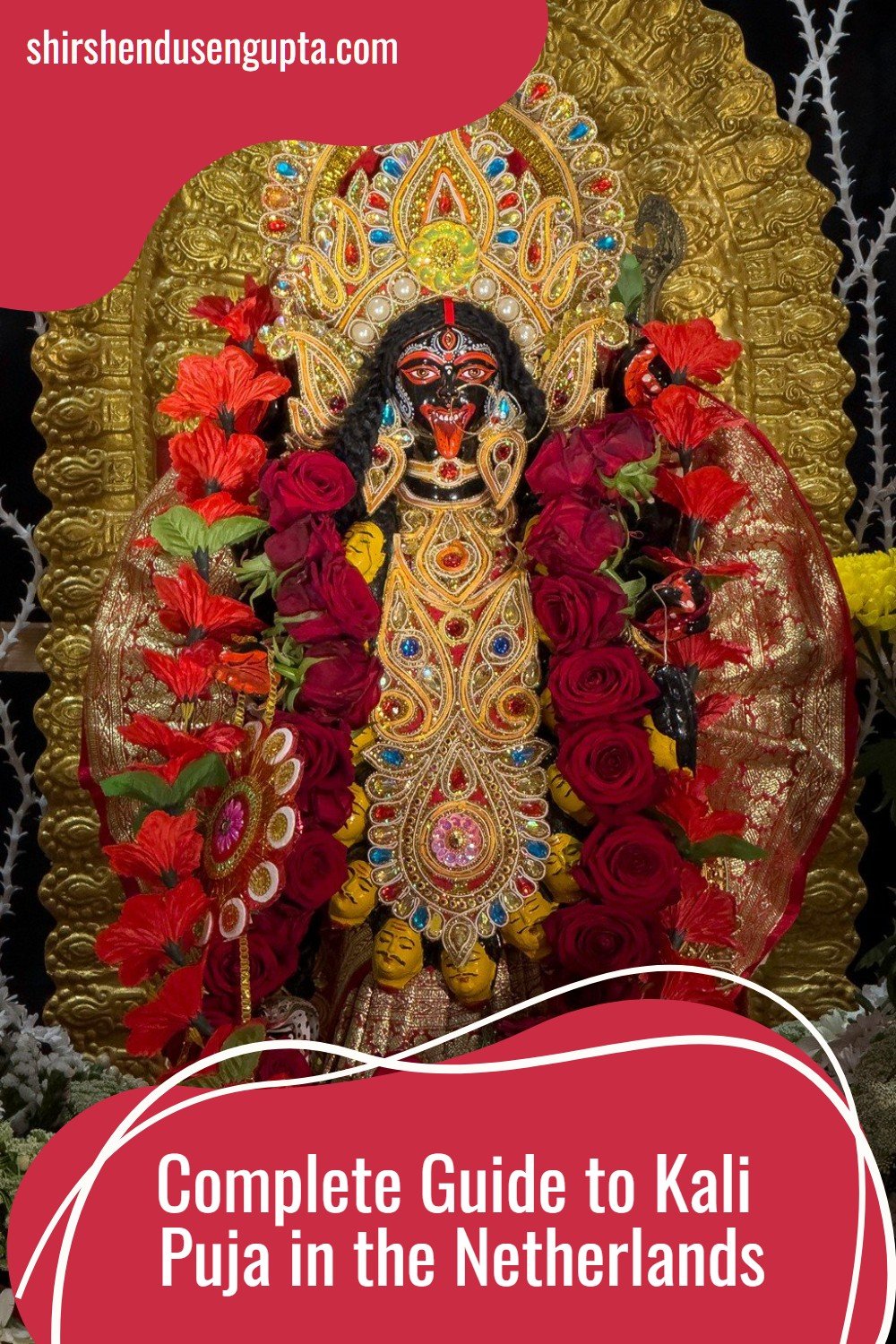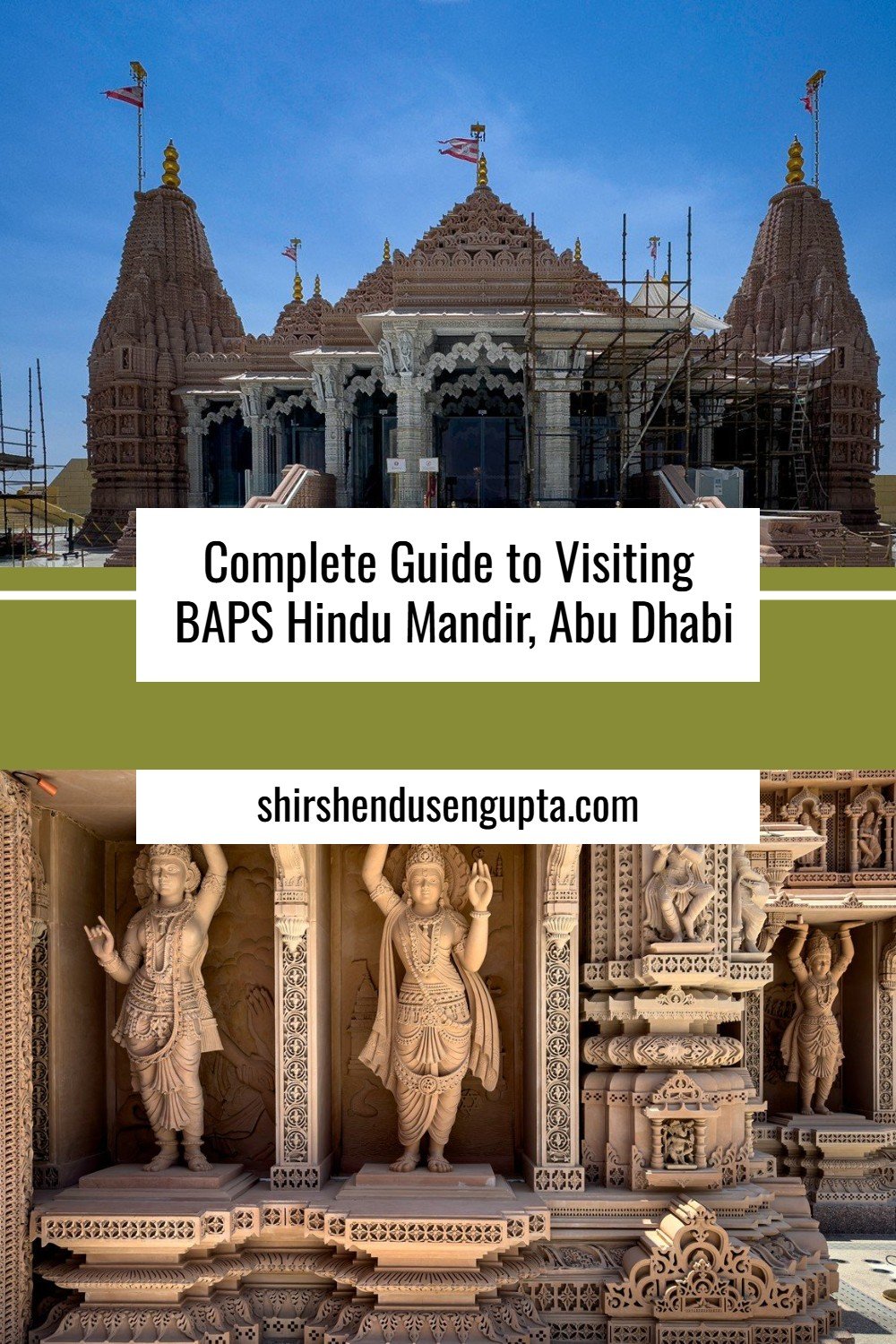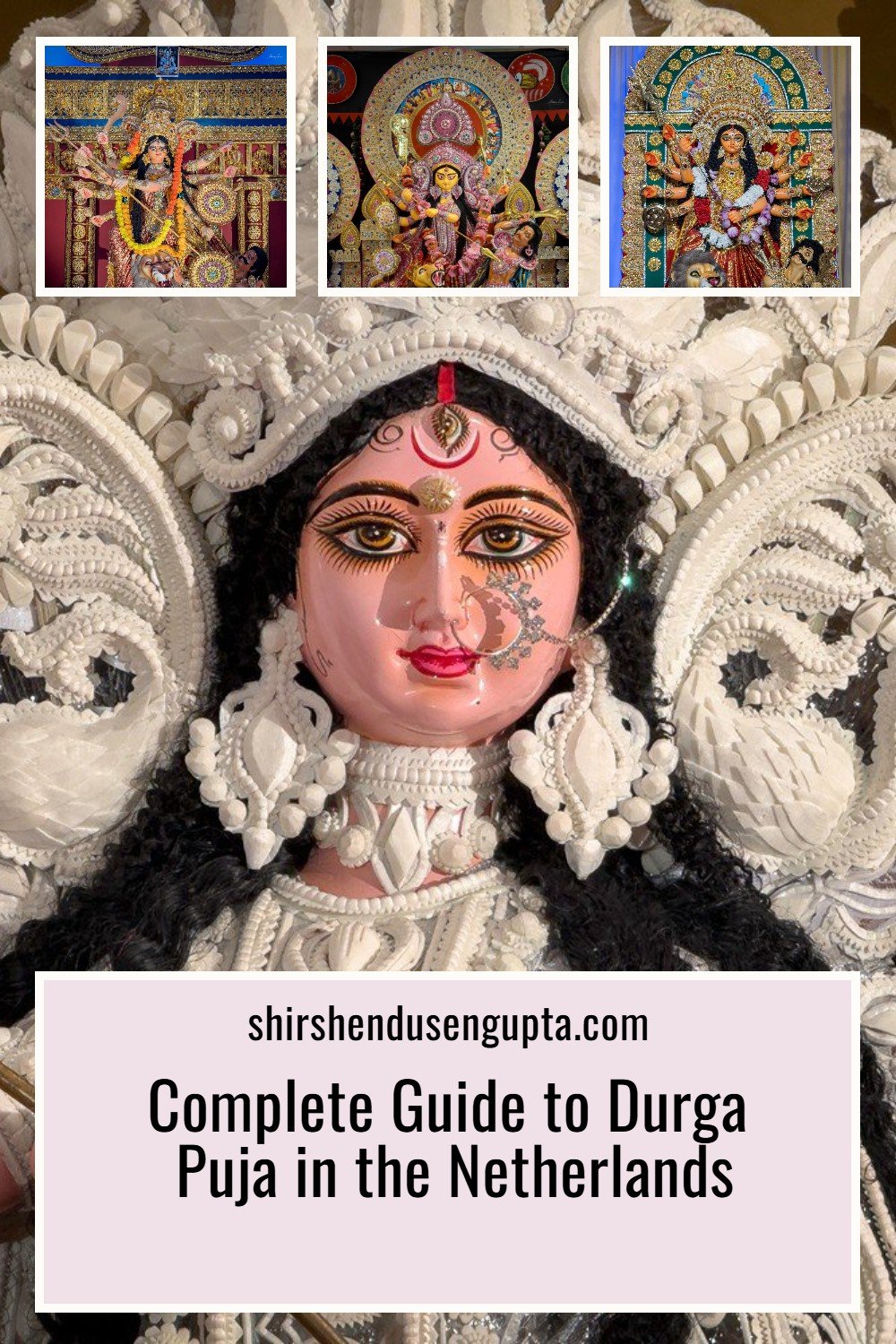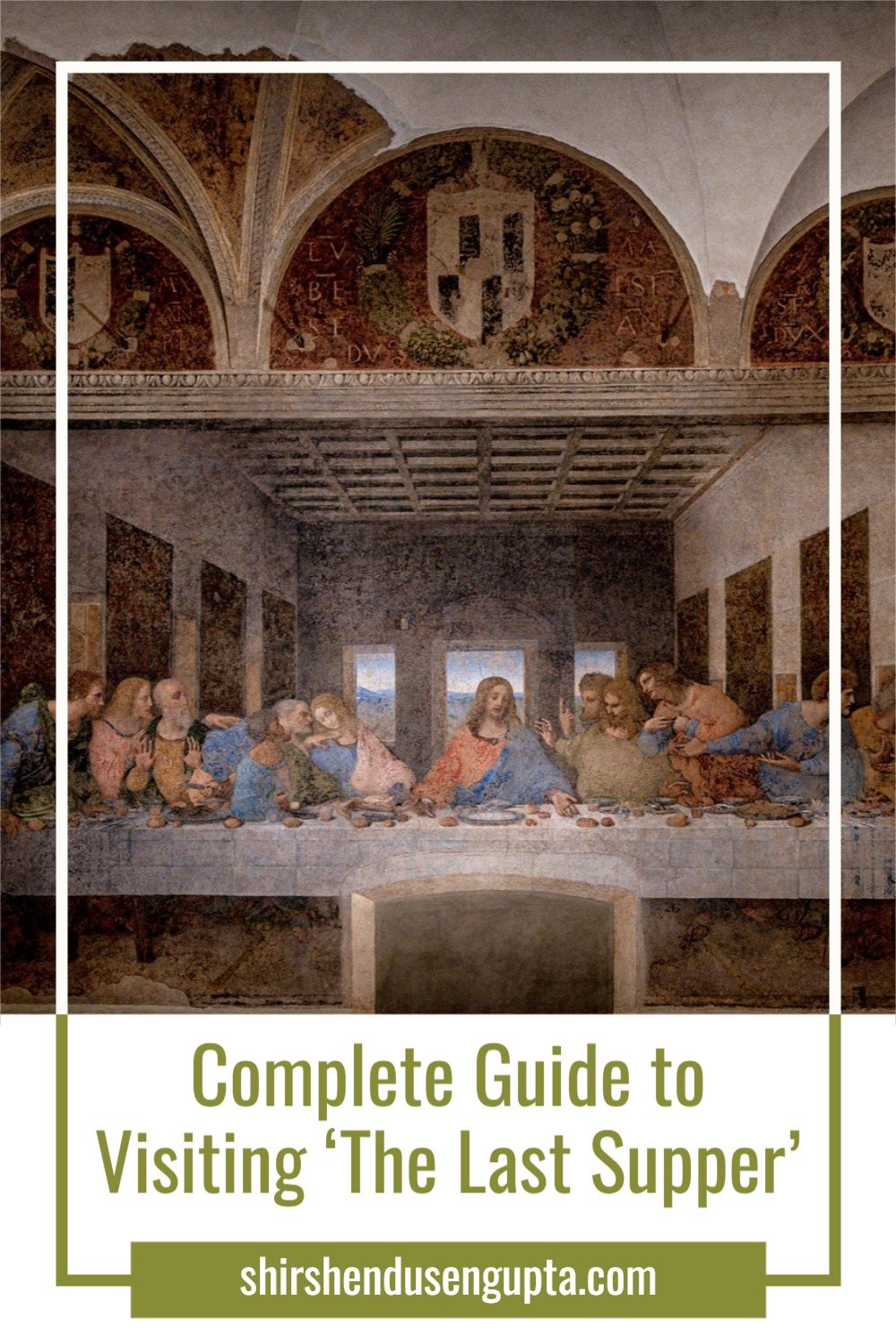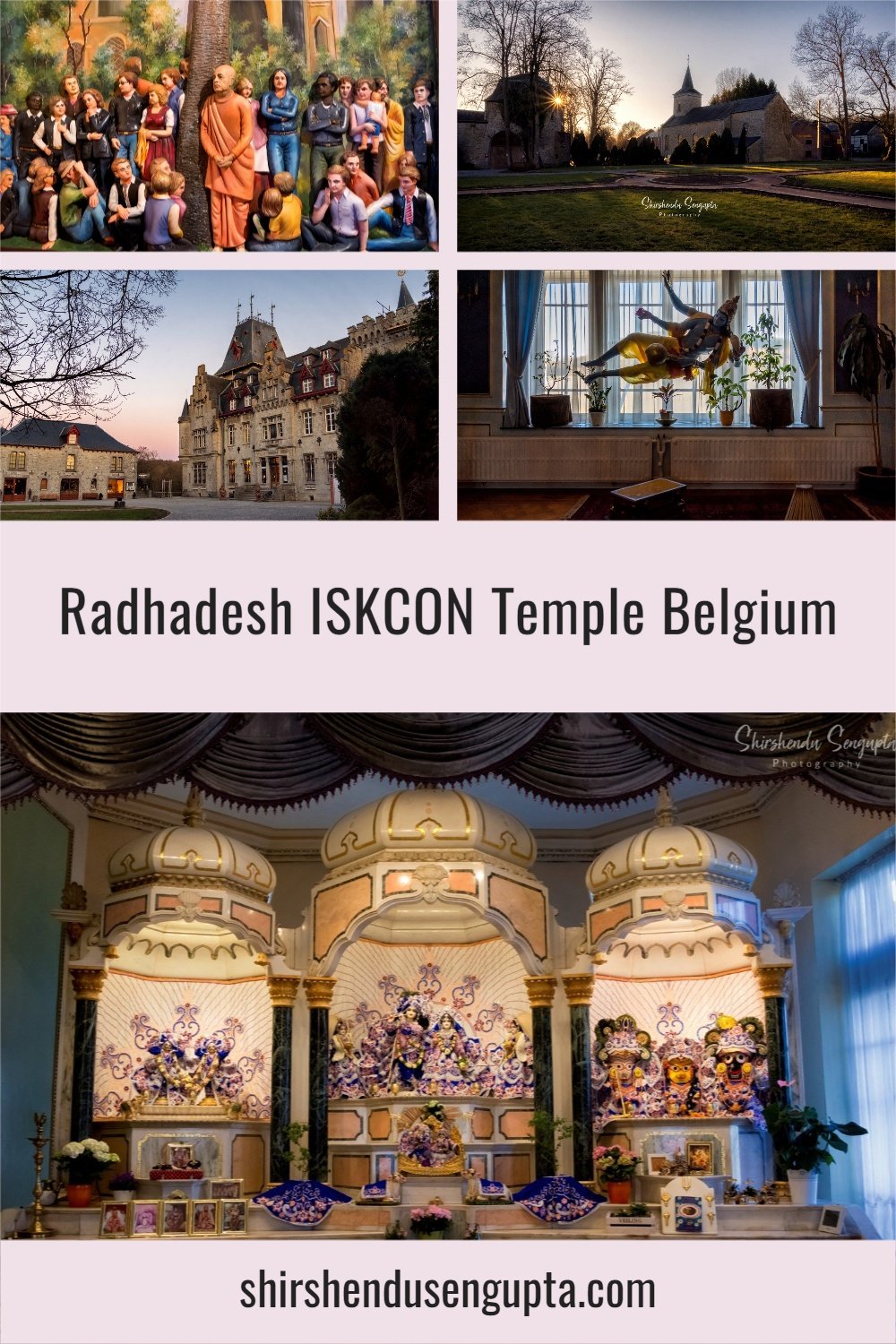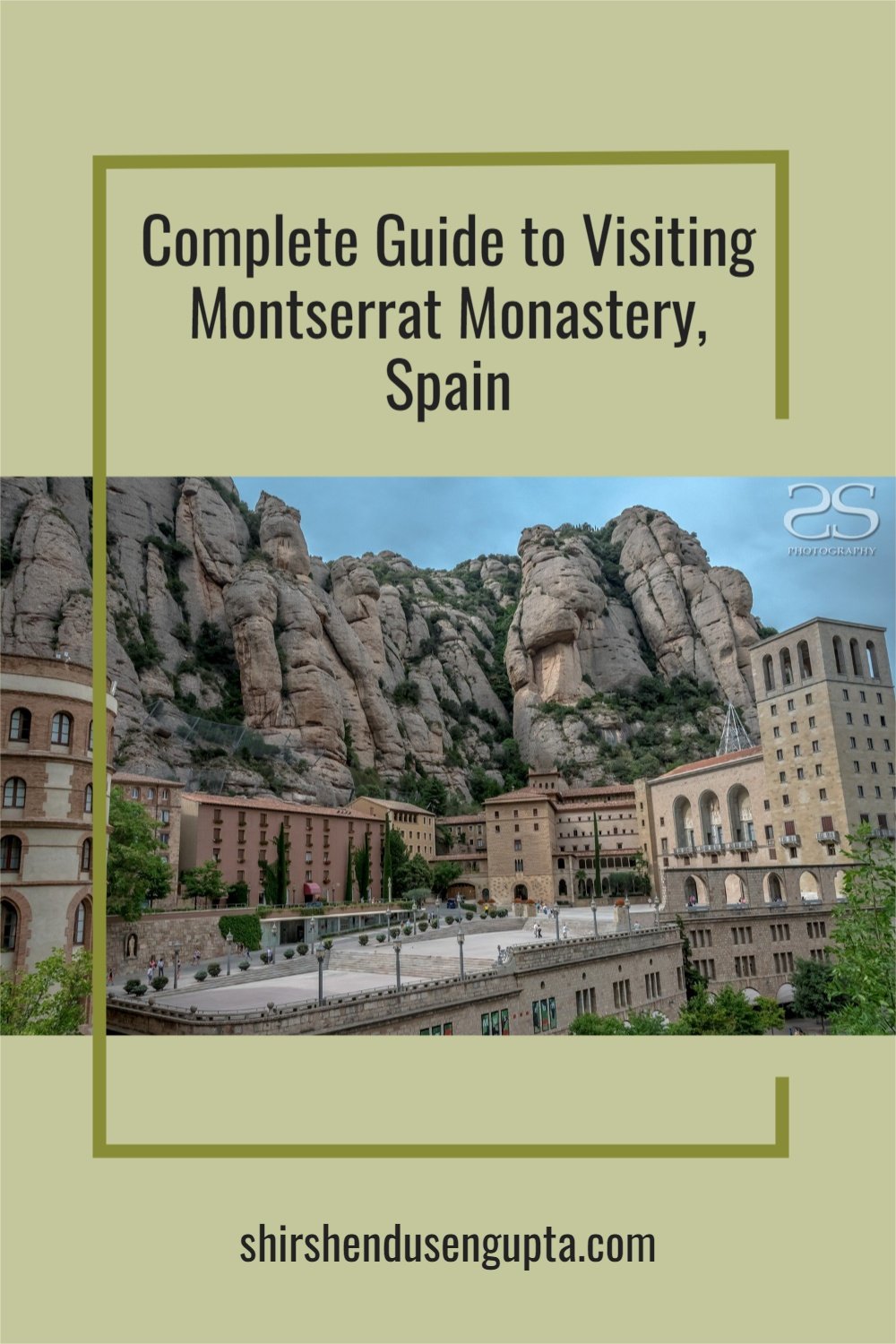Complete Guide to Kali Puja 2025 in the Netherlands | All Kali Puja Celebrations in 2025 by Bengali Communities of the Netherlands | Locations, Dates, Opening Hours, and Latest Updates
What is Kali Puja?
Kali Puja, also known as Shyama Puja, is a major annual Hindu festival that is celebrated in the Indian states of West Bengal, Bihar, Jharkhand, Assam, Odisha, Tripura, and the neighboring nations of Bangladesh and Nepal on the new moon night (Dipannita Amavasya) of the month of Kartik on the Indian calendar (which falls between October and November on the Gregorian calendar) to commemorate the victory of Hindu Goddess Kali (the fiercest form of Goddess Durga who is regarded as ‘Adi Shakti,’ the primordial cosmic energy) against the demons Chand, Munda, and Raktabija as a part of a greater war between Goddess Ambika (Durga) and the demons Shumbha and Nishumbha.
During the same time, in other northern and western states in India, Lakshmi Puja (worship of Goddess Lakshmi, the Goddess of wealth and fortune) and Diwali (the festival of lights), are celebrated.
What does Goddess Kali look like?
According to Hindu scriptures, after vanquishing Chand, Munda, and Raktabija, Goddess Kali went behind other demons on such a bloodthirsty rampage that her husband Lord Shiva had to lay himself beneath her feet to stop her. Goddess Kali stuck out her tongue realizing her mistake as soon as she stepped on her husband and stopped her killing spree. That’s why, Goddess Kali is often depicted in paintings in her most terrifying form as the slayer of demons, wearing a skirt made of demon arms, a garland made of demon heads, and earrings made of dead demons, holding the severed head of the demon Raktabija while jackals and serpents drink the blood that drips from Raktabija's head, and her tongue hanging out, depicting the moment her anger subsided after realizing she had stood on Lord Shiva. The complete story is coming later in this article.
Why is Goddess Kali Worshipped?
Goddess Kali is worshipped as an incarnation of the formidable feminine energy that’s the destroyer of evil forces and upholder of righteousness. Goddess Kali represents bravery, strength, and protection. Devotees seek Goddess Kali's blessings to protect them from harm and to find the inner strength to overcome life’s challenges.
She is also revered as a manifestation of Shakti, the primordial cosmic energy that gave rise to the universe. That’s why Kali Puja is celebrated in Amavasya or new moon night when the moon is not visible since this darkness signifies the primordial formless state of the universe. Her dark skin color represents her transcendental nature. Just as black absorbs all other colors, all forms disappear within her. Infinite knowledge is symbolized by the garland of fifty human skulls, which correspond to the fifty letters of the Sanskrit alphabet. Her skirt, which depicts severed human hands, represents labor and liberation from the karma cycle. Her three eyes stand for the three forms of time — past, present, and future. Time is another attribute of her name, Kali (as ‘Kala’ in Sanskrit means time).
When did Kali Puja Start?
The Kali Puja festival was started in the 16th century by the renowned sage Krishnananda Agamavagisha of Nabadwip in the State of West Bengal which was popularized in the 18th century by King Krishnachandra. Finally, when the Kali devotee Sri Ramakrishna Paramhansa Dev gained prominence among Bengalis in the 19th century, Kali Puja experienced a boom in popularity. A major change occurred at this time, as wealthy landowners started to heavily finance the event, resulting in more lavish festivities.
How is Kali Puja Celebrated in Kolkata and other parts of West Bengal?
Kolkata (formerly known as Calcutta), where I hail from, is the capital of the state of West Bengal situated in eastern India along the river Hooghly (eastern distributary of the river Ganges) and is frequently referred to as India's cultural capital. This city has a distinctive personality due to the influence of British Architecture (it was the first capital of the British East India Company from 1772 to 1911 when it was shifted to Delhi), rich traditions, beautiful music, and art. People in Kolkata have a special love for literature and films because it was once home to world-famous artists like the Nobel laureate poet Rabindranath Tagore and Academy Award-winning director Satyajit Ray among others. The city also offers an exceptional religious and cultural experience of Kali Puja every year which is the second largest festival after Durga Puja.
The statues of the Goddess standing on her husband Lord Shiva, often accompanied by two famous Bengali Kali devotees namely Ramakrishna and Bamakhepa, along with scenes from the mythology of Kali and her various forms viz. the Dasa Mahavidyas (coming later in the article) are displayed in ornately decorated gigantic bamboo pavilions (known as pandals). The pandals come alive at night with the glow of countless oil lamps and the hypnotic sound of devotional songs and rhythmic ‘dhaak’ (drum) beats. Additionally, scripture recitals, Goddess' ‘Aarti’ (prayerful ceremony), delectable ‘bhog’ (food offered to Goddess that is later distributed among devotees), live performances, feasting, and vibrant fireworks are all part of the festival. Red hibiscus flowers, sweets, rice, lentils, and fruits are offered to the Goddess. In Tantric tradition, animals are ritually sacrificed as offerings to the Goddess which has now become extremely rare. Devotees flock in large numbers to honor the fierce yet benevolent Goddess.
In the Dakshineswar Kali Temple in Kolkata, where Sri Ramakrishna Paramhansa Dev performed rites, Kali Puja is carried out in traditional style, and in the Kalighat Temple, Goddess Kali is worshipped as Goddess Lakshmi on this day. In the city of Naihaiti in West Bengal, Goddess Kali is worshipped as a 21-foot tall idol Boro Maa (Big Mother) adorned with several kilograms of gold and silver jewelry.
How did Goddess Kali Originate in Hindu Scriptures?
To understand the origination of Goddess Kali in Hindu scriptures, we first have to understand the evolution of Shaktism in the corpus of Hindu literature. So, let’s start from the very beginning.
Origin of Shakti in Vedic Literature (1500 - 900 BCE)
The corpus of Vedic literature comprises the Vedas (aka Samhitas), Brahmanas, Aranyakas, and Upanishads. The Vedas (meaning knowledge) are 4 ancient Hindu texts namely Rig Veda, Sama Veda, Yajur Veda, and Atharva Veda comprising a collection of poems or hymns composed in archaic Sanskrit praising a wide pantheon of Hindu Gods who personified the different forms of nature such as Fire (Agni), the Sun (Surya and Savitri), dawn (Ushas), storms (the Rudras), and rain (Indra). They are considered one of the oldest religious works in the world dating back to 1500 BCE. Around 900 BCE, the Brahmanas were composed as summaries of the Vedas, followed by other texts namely Aranyakas (“Forest Books”) and Upanishads, which delved deeper into the philosophies and introduced the doctrine of moksha (liberation) from samsara (the cycle of death and rebirth).
The entire corpus of Vedic literature existed in oral form since time immemorial. They were passed down from master to student for generations until they were finally written down between 1500 - 900 BCE (the Vedic Period in India). The Vedas are therefore regarded as ‘Shruti’ meaning “What is heard” which are products of divine revelation as contrasted with other texts designated as ‘Smriti’ meaning “what is remembered”, which are stories of great heroes such as the epics Ramayana and Mahabharata.
In Vedic Hinduism, Shiva/Purush and Shakti/Prakriti are the masculine and feminine aspects of the Supreme Absolute Truth, respectively, that are complementary to each other. The Purusha (pure conscious energy that exists beyond the realms of time and space) creates all matter in the universe through contact with the female cosmic material energy of Prakriti (Nature). When Prakriti comes in contact with Purusha, its internal elements evolve, leading to the formation of the Pancha Maha Bhutas, or the Five Great Elements namely, Akasha (Ether or Space), Vayu (Air), Agni (Fire), Jala (Water) and Prithvi (Earth).
However, it is believed that the origins of the Shakti concept are pre-Vedic. Sites related to the worship of the Mother Goddess or Shakti like the triangular Baghor stone from the Paleolithic era (around 9,000–8,000 BCE) were found at the Son River valley.
7 forms of Shakti as per Vedic Hinduism - Sapta Matrikas
As per Vedic Hinduism, Shakti (cosmic energy) manifests in the form of Sapta (7) Matrikas (Divine Mothers) who are the female counterparts of major male Gods of the Hindu pantheon. The Matrikas have existed from as early as the Indus Valley civilization (3300 – 1700 BCE) and were incorporated into Hindu philosophy in the 3rd century CE. The Sapta Matrikas are as follows -
Brahmani - Consort of Creator-God Brahma
Vaishnavi - Consort of Preserver-God Vishnu
Maheshvari - Consort of Destroyer-God Shiva
Indrani - Consort of Indra, the King of the Gods
Kaumari - Consort of Kumar/Skanda/Kartikeya, Shiva’s son as well as the God of War
Varahi - Consort of Varaha, the incarnation of Vishnu in the form of a boar
Chamunda/Yami - Consort of Yama, God of Death
Origination of Shakt-‘ism’ from Puranas (250 CE to 1000 CE)
Puranas are a much later encyclopedic genre of Hindu literature comprising 18 major and 18 minor books written from around 250 CE containing 400,000 verses describing a wide range of topics such as cosmogony, cosmology, genealogies of Gods, Goddesses, kings, heroes, sages, and demigods, folk tales, pilgrimages, temples, medicine, astronomy, grammar, mineralogy, theology, and philosophy. All Puranas are considered as Smritis. Among them, Markandeya Purana (one of the 18 major Puranas) and Devi Purana and Kalika Purana (two of the minor Puranas) talk about Shakti and hence are termed Shakta Puranas from where the concepts of Shaktism originated.
Shaktism (worship of Goddess Shakti) is one of the major Hindu denominations, that views a woman as the metaphorical Godhead or metaphysical reality. Shaktism, together with Vaishnavism (worship of Lord Vishnu) and Shaivism (worship of Lord Shiva), is one of the major forms of modern Hinduism and is especially popular in Bengal and Assam. In Shaktism, Shakti is the foremost deity, akin to the Brahman (ultimate truth) concept of Vedic Hinduism. She is considered to be the cosmos Herself - the source of all creation, the embodiment of energy, matter, and soul, the motivating force behind all action in the material universe, and the final dissolution point.
9 Forms of Shakti as per Puranic Shaktism - Nava Durgas
As per Shakta philosophy, Shakti manifests in the form of Nava (9) Durgas. Goddess Durga took these nine forms during the nine-day-long war with demon-king Mahishasura, where the tenth day is celebrated as the Vijayadashami (meaning “10th day of victory”) among the Hindus and is one of the largest Hindu celebrations in the world (a UNESCO Intangible Cultural Heritage). The Nava-Durga are as follows -
Shailaputri - Daughter of Mountain (Parvati)
Brahmacharini - Mother of devotion and penance
Chandraghanta - Destroyer of demons
Kushmanda - Goddess of The Cosmic Egg
Skandamata - Goddess of motherhood and children
Katyayani - Goddess of Power
Kalaratri - Goddess of Auspiciousness and Courage
Mahagauri - Goddess of Beauty
Siddhidhatri - Goddess of Supernatural Powers or Siddhis
To know more about the story of Goddess Durga killing Mahishasura and the festival of Durga Puja, please read our article Complete Guide to Durga Puja 2026 in the Netherlands | All Durga Puja Celebrations in 2026 by Bengali Communities of the Netherlands | Locations, Dates, Opening Hours, and Latest Updates.
Origination of Tantric Shaktism from Tantra Literature (600 CE to 1300 CE)
Tantra is the term used to describe a series of post-Vedic Sanskrit treatises that are comparable to the Puranas and were composed in the 7th century CE. Tantra refers to techniques and practices incorporating mantra, yantra, nyasa, and mudra usually performed under the supervision of a competent guru following proper initiation (diksha). In Tantra, Shakti is identified with the kundalini or the energy that is coiled at the base of the spine until it is raised up through the body by yogic disciplines. The question of whether the tantric rituals are Vedic or not has been the subject of a long-running discussion among theologians.
Tantric Shaktism considers the Goddess Kali (as a form of Shakti) as the female personification of the energy of Lord Shiva to an extreme view that believes Shiva to be like a corpse without her. The Nirvana-tantra says the Holy Trinity Brahma, Vishnu, and Shiva all arise from Goddess Kali like bubbles in the sea and subside within her. In one passage of the Mahanirvana-tantra, Lord Shiva himself praises Goddess Kali saying “At the dissolution of things, it is Kala (Time) Who will devour all, and by reason of this He is called Mahakala (an epithet for Lord Shiva), and since Thou devourest Mahakala Himself, it is Thou who art the Supreme Primordial Kalika. Because Thou devourest Kala, Thou art Kali, the original form of all things, and because of Thou art the Origin of and devourest all things Thou art called the Adya (the Primordial One). Re-assuming after Dissolution Thine own form, dark and formless, Thou alone remainest as One ineffable and inconceivable. Though having a form, yet art Thou formless; though Thyself without beginning, multiform by the power of Maya, Thou art the Beginning of all, Creatrix, Protectress, and Destructress that Thou art.”
10 Forms of Shakti as per Tantric Philosophy - Dasa Mahavidyas (First Mention of Goddess Kali)
As per Tantric Shaktism, Shakti (cosmic energy) manifests in the form of Dasa (10) Mahavidyas (aspects of all-knowing Great Intellect) namely -
Kali – The "Devourer of Time" and the ultimate manifestation of Brahman
Tara – The Goddess who guides, protects, provides ultimate knowledge, and leads to salvation
Tripura Sundari (Shodashi) – The Goddess who is "Beautiful in the Three Worlds" aka the "Tantric Parvati"
Bhuvaneshvari – The “World Mother” whose Body is the cosmos
Bhairavi – The furious Goddess
Chhinnamasta – The Goddess Who Decapitated Herself
Dhumavati – Goddess of Death or the Widow Goddess
Bagalamukhi – The Goddess who Paralyzes Enemies
Matangi – The "Tantric Saraswati"
Kamala – The Lotus Goddess aka the "Tantric Lakshmi"
The Goddess in Kali Form
The Goddess in Tara Form
The Goddess in Chhinnamasta Form
Emergence of Maa (Mother) Kali in Medieval Bengali Religious Literature (1500 to 1775 CE)
Goddess Kali is a central figure in medieval Bengali devotional literature that starts with the Chandimangal, an important subgenre of Mangal-Kavya, the most significant genre of medieval Bengali religious literature comprising narratives of indigenous deities of rural Bengal who were considered "nimnokoti" (lower) by historians because they were absent or unimportant in classical Hindu literature such as the Vedas or Puranas. Among them, Chandi (Goddess Kali), Manasa (Goddess of snakes), Shitala (Goddess of smallpox and other infectious diseases), and Dharma Thakur (God of death) were the main ones. Later Goddess Kali became the central figure in the works of notable devotee poets as Kamalakanta Bhattacharya (1769 - 1821) and Ramprasad Sen (1718 - 1775) from the late medieval Bengali devotional literature era.
Before Goddess Kali appeared in Bengali medieval devotional literature, she was hardly ever depicted as a motherly figure in Hindu mythology and iconography. In contrast to the Tantric approach to Kali, which involves displaying courage by confronting her in the middle of the night on cremation grounds, the Bengali devotee takes on the demeanor of a child and grows to adore her unconditionally. The devotee's objective in both situations is to learn to accept life as it is and to reconcile with death.
What is the Legend of Goddess Kali?
The story of Goddess Kali first appears in the Devi Mahatmya meaning ‘Glorification or Praises of the Goddess,’ also known as as Durga Saptasati, Sata Chandi, Chandi-Mahatmya, or Chandipatha, which is a part (chapter 81 to 93) of the larger Markandeya Purana, one of the oldest of the 18 major Puranas written in 250 CE that presents a diverse range of topics including society, religion, and mythology. Later the story was further elaborated in Devi Bhagavata Purana also known as Devi Purana or Devi Bhagavatam, and Kalika Purana (two among the 18 minor Puranas) written in the 6th century CE.
The Devi Mahatmya begins with the story of King Suratha, who was defeated in war and banished, and Samadhi, a merchant who was driven away by his wives and children for his wealth. Both men, troubled by these events, decided to give up the world and went to the forest where they met by chance. The two people reflected and found that they both still cared about the well-being of the people who drove them out but wondered why. They sought an answer from the sage Medhas (Sumedha) to which the sage responded by saying that this is the nature of existence just like the hungry birds gathering seeds and, despite their hunger, dropping them into their young's beaks. The sage exclaimed that this is the power of Maha-Maya, the name given to the Goddess who creates and deludes the world, who manifests herself everywhere in many forms, and who empowers both attachment and release. Both men became curious about this Goddess and wanted to know more about her. Then the sage narrates them the stories of the Goddess. The thirteen chapters of Devi Mahatmya are divided into the following three episodes.
First Episode (Chapter 1): Devi Maha-Maya
The Slaying of Madhu and Kaitabha by Lord Vishnu
Devi is shown in Devi Mahatmya's first episode as Maha-Maya, the great illusion/power that causes Vishnu to enter a meditative slumber (yoganidra) on the cosmic ocean's waters before the Universe manifests itself, which is a never-ending cycle of manifestation, destruction, and re-manifestation. Two demons, Madhu and Kaitabha, emerged from the earwax in Vishnu's ears and tried to kill Brahma, the creator who was pondering on the formation of the universe sitting on a lotus that had sprouted from the navel of Lord Vishnu. For Vishnu to arise and defeat the demons, Brahma sang to the Great Goddess, pleading with her to distance herself from him. Devi consented to retreat, and Vishnu awakened, battled the demons for 5,000 years, defeated them, and set in motion the cycle of creation. As a result, Vishnu was given the epithets Madhusudana (the Killer of Madhu) and Kaitabhajit (the Victor of Kaitabha). Devi is hailed here as the force that permits the disruption and restoration of cosmic order.
Second Episode (Chapters 2 - 4): Mahishasura Mardini
The Slaying of Mahishasura by Goddess Durga
The Goddess appears in this episode as her avatar Durga. In the episode, the shape-shifting buffalo demon Mahishasura, did severe penance to obtain a boon from Lord Brahma that no man (not woman) could defeat him, attacked all three worlds, and defeated all male Gods. Feeling angered and helpless, the Gods merged all their energies to form Goddess Durga. Then the Gods gave her a lion and other weapons. Goddess Durga rode the lion into combat and killed the buffalo demon by chopping off its head.
To know more about the story of the Goddess Durga killing Mahishasura and the festival of Durga Puja, please read our article Complete Guide to Durga Puja 2026 in the Netherlands | All Durga Puja Celebrations in 2026 by Bengali Communities of the Netherlands | Locations, Dates, Opening Hours, and Latest Updates.
Final episode (Chapters 5 - 13): Devi Ambika (The Origin Story of Goddess Kali)
The Conquest of Heaven by Shumbha and Nishumbha
This elaborate final episode spanning 9 chapters narrates how two asura brothers Shumbha and Nishumbha sought to conquer the three worlds by subjecting themselves to severe penance for ten thousand years to obtain a boon from Lord Brahma that no man or asura could destroy them. They thought that no woman was powerful enough to kill them both in a war. With the power of the boon, they attacked and conquered heaven. The Goddess had vowed to reincarnate to save the Gods in times of need. The Devas traveled to the Himalayas to worship Goddess Parvati and performed a beautiful hymn in her honor. To save the Gods, Devi Ambika or Kaushiki emerged from Parvati's body's kosha, or sheath.
The Slaying of Dhumrolochana by Goddess Ambika
Two lesser asuras Chanda and Munda, working for Shumbha, met the Goddess Ambika and were fascinated by her beauty. They told Shumbha about this Goddess, and he wanted to have her. Sugriva, an asura, was sent by Shumbha to ask her to marry one of them. The Goddess clarified, that according to her vow, she would only wed a man who could defeat her in combat. Angered by the rejection of the allegedly "arrogant" Goddess, the demons despatched the asura Dhumralochana and his army of sixty-thousand asuras to abduct her. When Dhumrolochana raced up to her to humble her, he was reduced to ash by her simple "Hunkaar" (war cry). His massive army of troops launched a variety of weapons and sent forth horses, elephants, and chariots. The Carrier of Ambika, Kesari (Lion), was enraged and let out a thunderous scream before leaping out in lakhs of forms and tearing the soldiers' bodies to shreds.
The Slaying of Chanda and Munda by Goddess Kali
An enraged Shumbha gave Chanda and Munda the command to lead a sizable army to drag the Goddess before him by her hair. When Chanda-Munda led an ocean-like four-divisioned army (Chaturanga Bala) made up of charioteers, elephants, horses, and infantry, they all saw a large, lonesome woman with a mischievous smile standing on the mountain-top. Suddenly her smirk disappeared, her skin turned black with rage, her eyes turned red, her teeth protruded, and her tongue elongated. This horrifying figure of Devi known as Maha Kali jumped from the mountain-top along with the roaring Lion, creating lakhs of such figures all over, tossing elephants, devouring horses, crushing heads of the demon armies, grabbing the weapons shot at her by her teeth and chewing them, and turning the battlefield into streams of blood and disfigured bodies without heads of many, limbs of several and carcasses of lakhs of dead animals.
As the ocean-like army of warriors was decimated, both Chanda and Munda raced towards Goddess Kali, one hurling sharp weapons at a tremendous pace and the other pouring out strings of "Astras." She quickly decapitated them, grabbed their heads, and laughed so violently that the Earth and the Sky thundered. Then, with the heads of Chanda and Munda in her hands, Goddess Kali went up to Goddess Ambika and said while laughing loudly, "Here have I brought you the heads of Chanda and Munda as two great animal offerings in this sacrifice of battle; Sumbha and Nisumbha, you shall yourselves slay." Seeing this Goddess Ambika replied, 'Because you have brought me both Chanda and Munda, you O Devi, shall be famed in the world by the name Chamunda.”
The Slaying of Raktabija by Goddess Kali
As the battle became more intense, the Sapta-Matrikas emerged from the bodies of seven male Gods to help the Goddess. At that time, the all-powerful demon Raktabija was sent to the battlefield who had a boon from Lord Brahma that whenever a drop of his blood fell to the ground, it would transform into a "Bija," or seed, from which another Raktabija would grow. Goddess Kali outwitted Raktabija by lifting him into the air, devouring him with her teeth, and drinking his blood before it spilled onto the ground.
The Bloodthirsty Rampage of Goddess Kali and Lord Shiva’s Intervention
After slaying Chand, Munda, and Raktabija, Goddess Kali went behind other demons on such a bloodthirsty rampage that her husband Lord Shiva had to lay himself beneath her feet to stop her. Goddess Kali stuck out her tongue realizing her mistake as soon as she stepped on her husband and stopped her killing spree. That’s why, Goddess Kali is often depicted in paintings in her most terrifying form as the slayer of demons, wearing a skirt made of demon arms, a garland made of demon heads, and earrings made of dead demons, holding the severed head of the demon Raktabija while jackals and serpents drink the blood that drips from Raktabija's head, and her tongue hanging out, depicting the moment her anger subsided after realizing she had stood on Lord Shiva.
The Slaying of Shumbha Nishumbha by Goddess Ambika
Then, all of the Shaktis together killed Nishumbha and his army, leaving only Shumbha. When Shumbha saw this he was overwhelmed. He mocked the Goddess, saying that she could not defeat him alone and that’s why she needed the assistance of seven more Goddesses to do so. The Goddess became enraged, merged all the Shaktis into herself, and slew Shumbha single-handedly, ridding the world of evil.
With this, the sage Medhas finished the tale of the Devi Mahatmya. He advised King Suratha and the merchant Samadhi to seek refuge in Devi in order to overcome their illusion. After they both performed penance, Devi appeared before them to grant them the boons they desired. The king asked for getting his kingdom back and the merchant asked for wisdom. The Devi granted them their wishes and disappeared.
Symbolism in the Legend of Goddess Kali
The various forms that Goddess Durga took during the battle (Kali, Ambika, and her serene Durga form) and the various demons she encountered serve as a metaphor for the complexity of universal nature and divine power.
Goddess Kali - She represents the force that destroys ego, ignorance, and delusion. Her arrival on the battlefield shows that unchecked ego and evil, no matter how strong, cannot stand in front of the might of divine justice.
Goddess Ambika - She represents the unadulterated, angry power of the cosmos that emerges when righteousness is endangered. Her role in the battle symbolizes the universal outrage against oppression and injustice.
Goddess Durga - In her entirety, Durga represents the Shakti, or divine feminine energy, which upholds cosmic order by protecting, sustaining, and sometimes destroying. Her triumph against Shumbha and Nishumbha serves as a potent warning that evil, no matter how invincible it appears, will ultimately be vanquished by the force of truth and morality.
Shumbha and Nishumbha - Shumbha stands for the sense of "I" or "Me" while Nisumbha stands for the sense of "Mine," or the attachment to things that the false self clings to through identification with other objects. Shumbha and Nishumbha closely follow one another since a false sense of "mine" will inevitably arise where there is this sense of "I."
The Battle - The war between the Goddess and the demons is likened to a Maha Yagna since it symbolizes the most profound purifying process.
The Overall Saga - Overall the story of Goddess Kali teaches us that only when there is a lack of positive energy (Shakti), negative forces (asuras) arise. None of these asuras (negativities) can hurt you when you are full of enthusiasm and positive energy.
The Kali Pujas in the Netherlands in 2025
In the Netherlands, religious festivals like Kali Puja are not held within pandals but in public venues like concert halls or stadiums which are rented by the organizing committees during the festive days. Goddess Kali finally arrived in the Netherlands in the year 2024, holding the hands of Uchchas, the first Bengali community in the Netherlands to organize a sarbojonin (public) Kali Puja festival. Currently, it is the only public Kali Puja held in the Netherlands. Below, are listed the details of Uchchas’s Sarbojonin Kali Puja!
1. Uchchas’ Sarbojonin Kali Puja and Diwali Festival (Kudelstaart)
Uchchas is a new Bengali Community founded in 2024 with the aim of promoting multiculturalism and fostering intercultural and interreligious dialogue by offering a forum for the exchange of ideas and knowledge. They organized their and that of the Netherland’s first Kali Puja in 2024.
Location of Uchchas’ Sarbojonin Kali Puja and Diwali 2025
Kudelstaartseweg 239, 1433 GH, Kudelstaart
Dates
Kali Puja and Diwali Festival on Sunday, October 19, 2025
Tickets
Darshan (visiting Goddess Kali) is free in the mornings. You need to buy tickets if you wish to attend the cultural evenings and/or taste authentic Bengali cuisine prepared by the food team at Uchchas.
Facebook Page/Website
To get the latest news and updates, register for food coupons, participate, or volunteer in cultural programs, games, or contests, visit their Facebook Page facebook.com/Uchchas-Netherlands.
Visiting the Netherlands
Best Time to Visit: The best seasons to travel to the Netherlands are spring (April to May) when tulips are in full bloom and early fall (September to October) when beautiful fall colors are everywhere. The weather is mild and pleasant during these times, and the crowds are generally smaller compared to the peak summer season (June to August).
Number of Days to Stay: Seven to ten days are perfect for touring the Netherlands. This allows you to visit major cities like Amsterdam, Rotterdam, and The Hague, as well as explore smaller towns and attractions such as Utrecht, Haarlem, Maastricht, and the tulip fields. It also gives you time to experience the Dutch countryside and iconic windmills.
Best Place to Stay: Amsterdam, the capital of the Netherlands, is a great place to start your Dutch exploration. It has a large selection of accommodation options, ranging from high-end hotels to inexpensive hostels. Major attractions in the city include the Rijksmuseum, the Anne Frank House, and the Van Gogh Museum. For those seeking a more contemporary urban experience, Rotterdam is a fantastic choice because of its modern architecture and vibrant cultural scene. Additionally, it is a significant transportation hub that facilitates travel around the country. Den Haag (The Hague) which is the seat of the Dutch government and the International Court of Justice, is home to many historical landmarks, museums, and beaches. For those who like to avoid the bustle of the bigger cities, Utrecht is a wonderful option because of its convenient central location and quaint medieval old town. It has excellent train connections to various regions of the nation.
Best Way to Arrive: Amsterdam Airport Schiphol, one of Europe's busiest airports, serves as the primary international entry point into the Netherlands. It is connected to numerous international destinations. The Netherlands has excellent train connections to its surrounding nations. Amsterdam is connected to cities like Brussels, Paris, London, and Berlin via international trains like Thalys, Eurostar, and ICE. Numerous international bus companies, including FlixBus, run services from different European cities to the Netherlands. You can also drive to the Netherlands by car, especially if you want to explore the surrounding regions. There is a vast road network throughout the nation, and airports and major cities offer car rental services.
Best Local Mode of Conveyance: The Netherlands has a first-grade public transportation system consisting of buses, trains, trams, metros, and ferries. A contactless smart card called the OV-chipkaart is used to board all public transportation. Nederlandse Spoorwegen (NS) runs the trains, which are the most convenient means of transportation between cities. In addition to ridesharing services like Uber, taxis are accessible in all major cities. The Netherlands is well-known for its cycling culture, featuring bike-friendly infrastructure and designated bike lanes all around the nation. Cities in the Netherlands are very walkable, especially the central areas of Amsterdam, Utrecht, and The Hague. In cities like Amsterdam, canal boats are a popular way to see the city from a different perspective. Various companies offer canal cruises and water taxis.
Epilogue
So those were all the Kali Puja celebrations happening across the Netherlands in 2025. Please let us know in the comments below if you enjoyed reading this article.
And if you are interested in visiting other festivals in the Netherlands, please read our article Netherlands Festival Calendar 2025-2026 | Upcoming Annual Events and Festivals in the Netherlands. Until then, I wish you merry traveling and happy shooting!
Pin the article
Bookmark the article for reading later!
Want to license/buy photos in the article?
License photos for commercial/editorial use or buy photo prints!
Want us to write an article for you?
Articles for magazines, newspapers, and websites!
Watch our Videos
Check out our videos on our Youtube Channel!
Join the Newsletter
Get updates on our latest articles!
We respect your privacy. Read our policy here.




